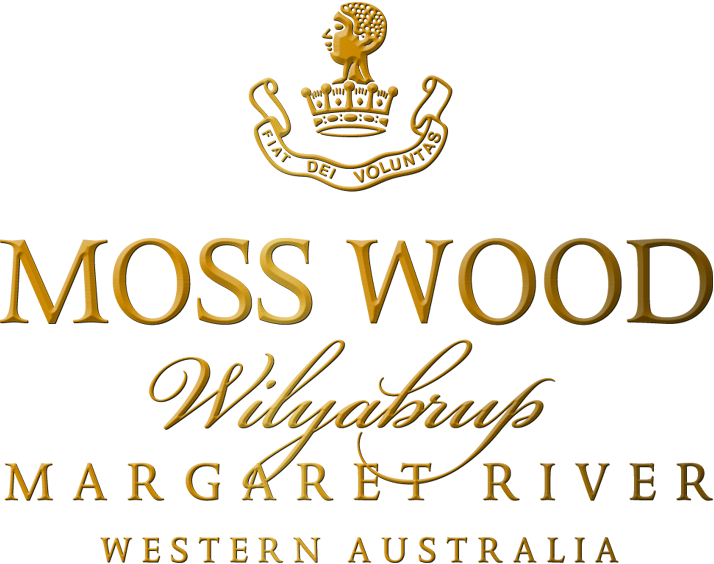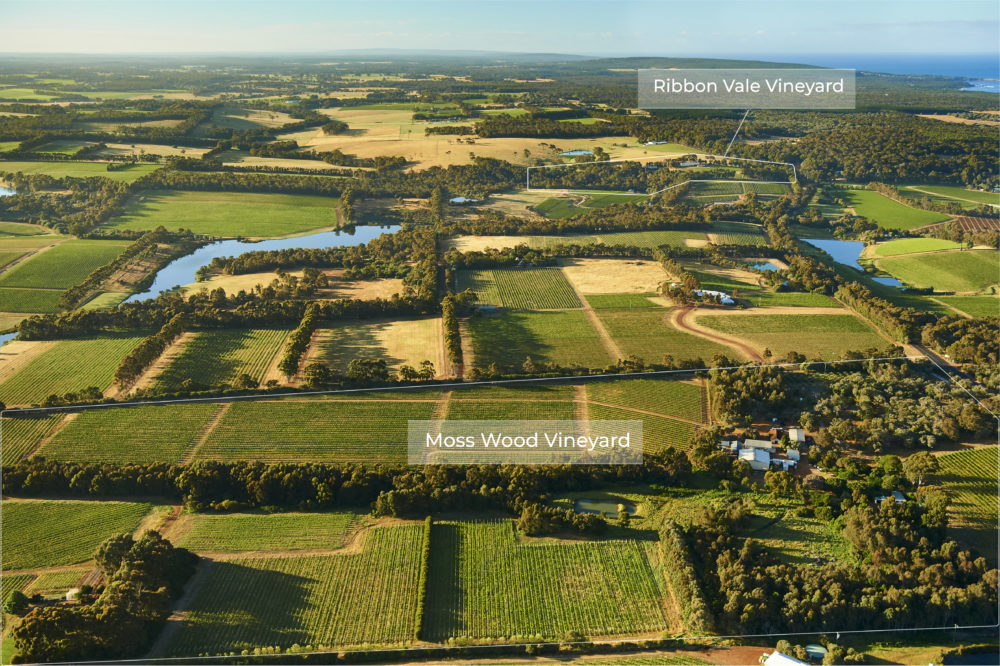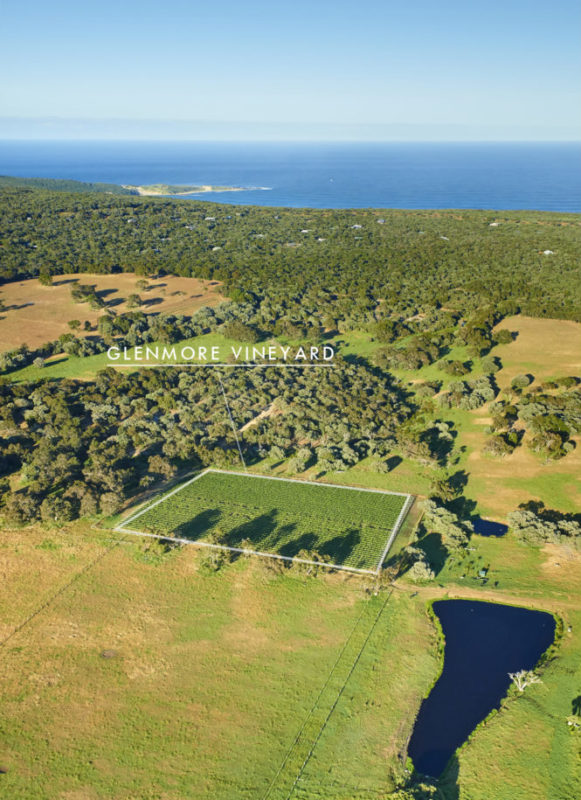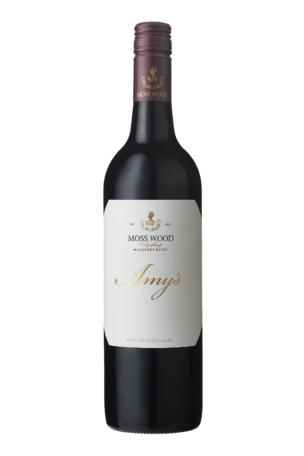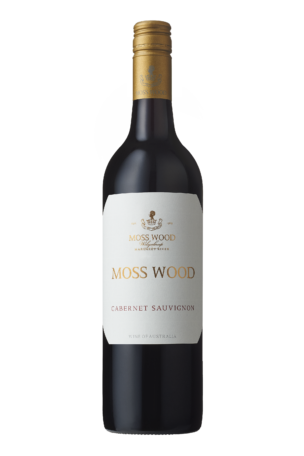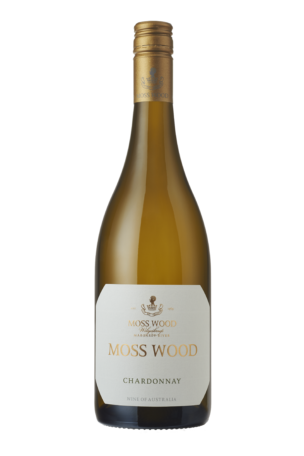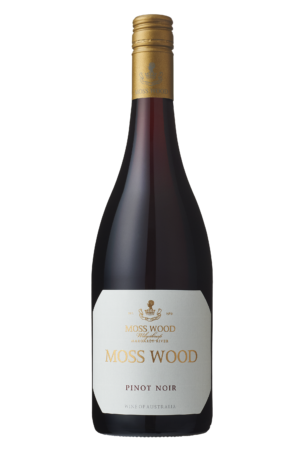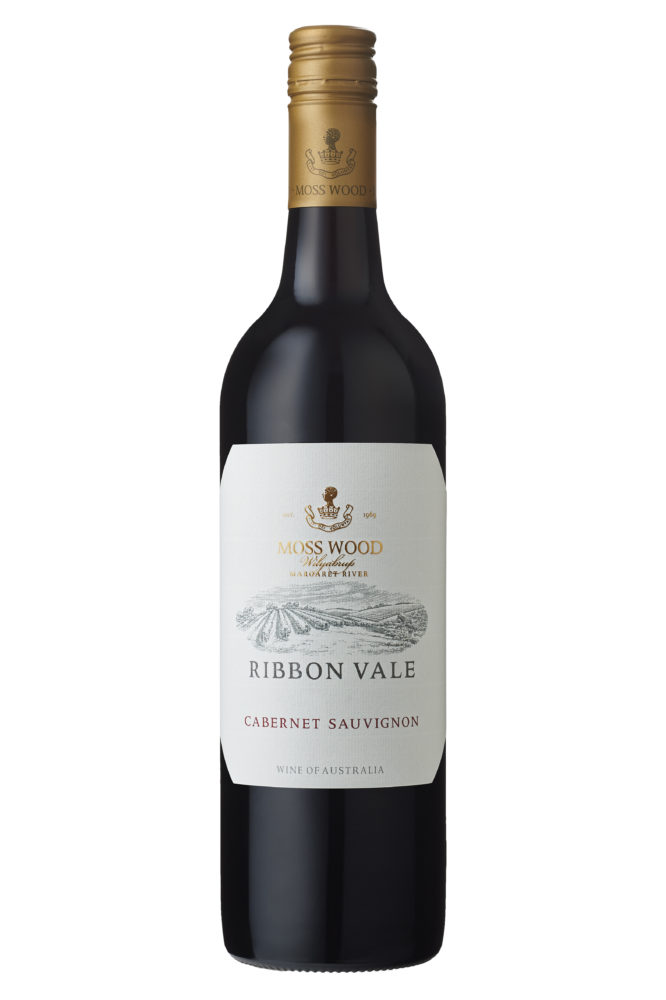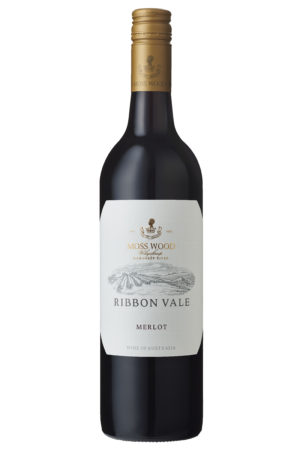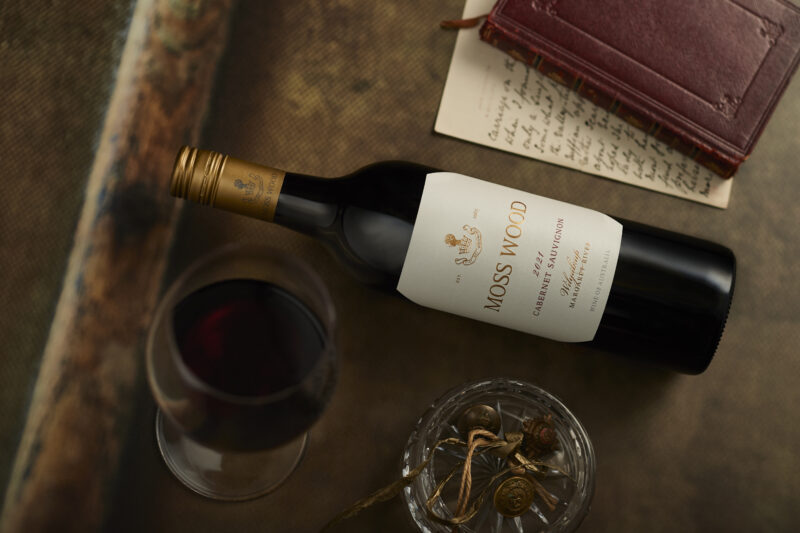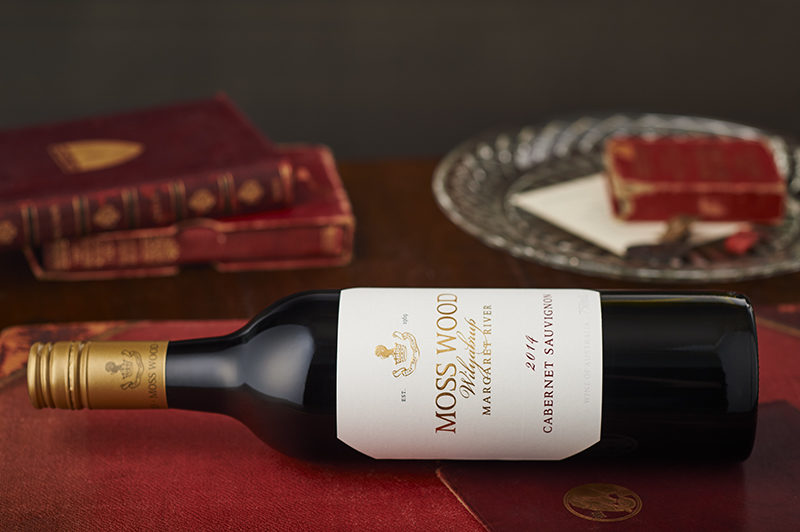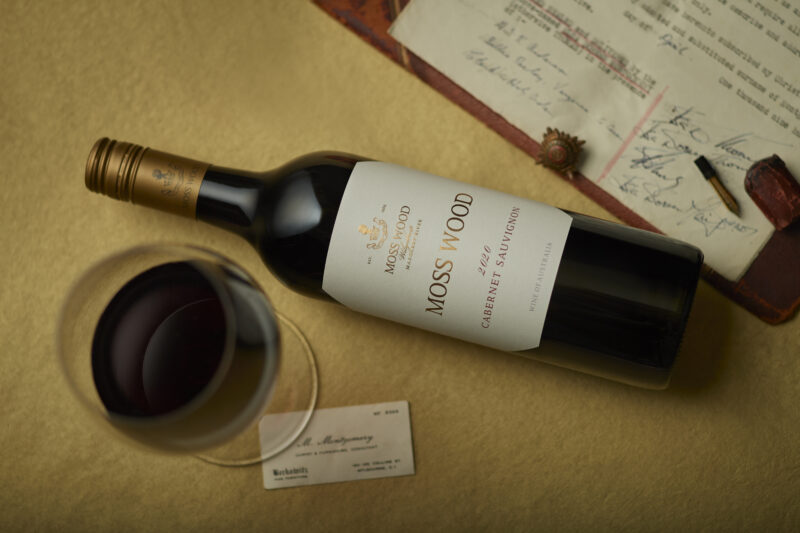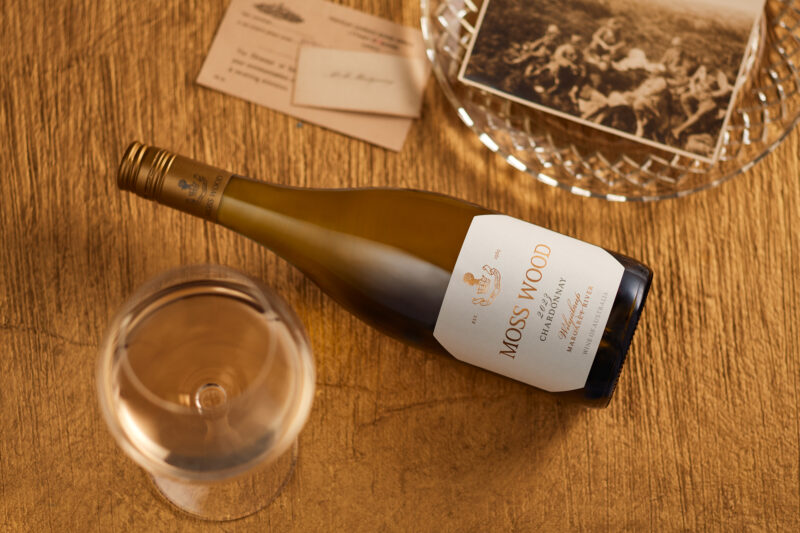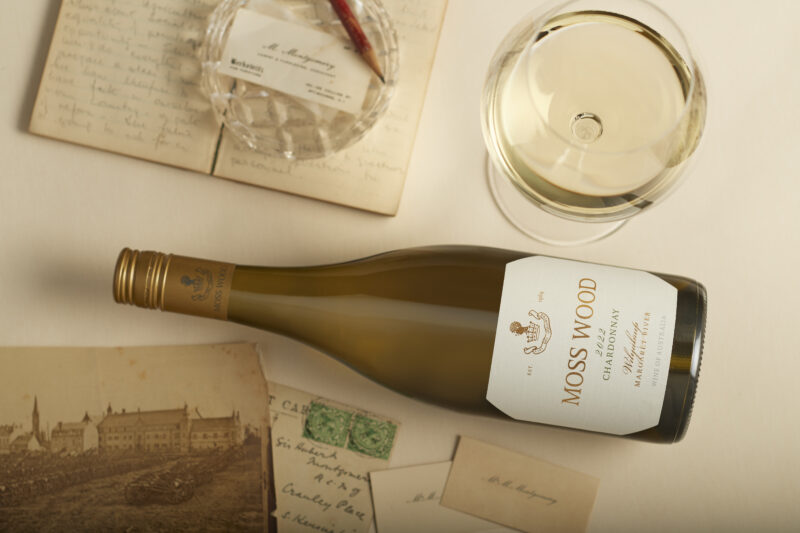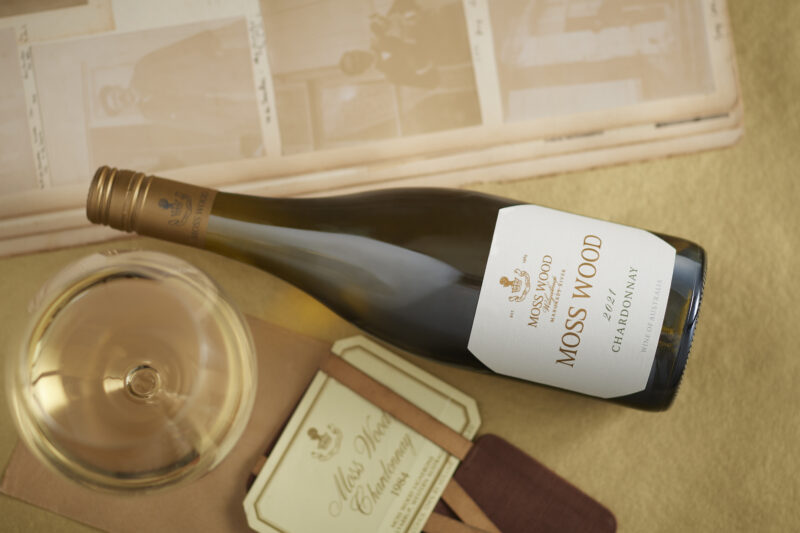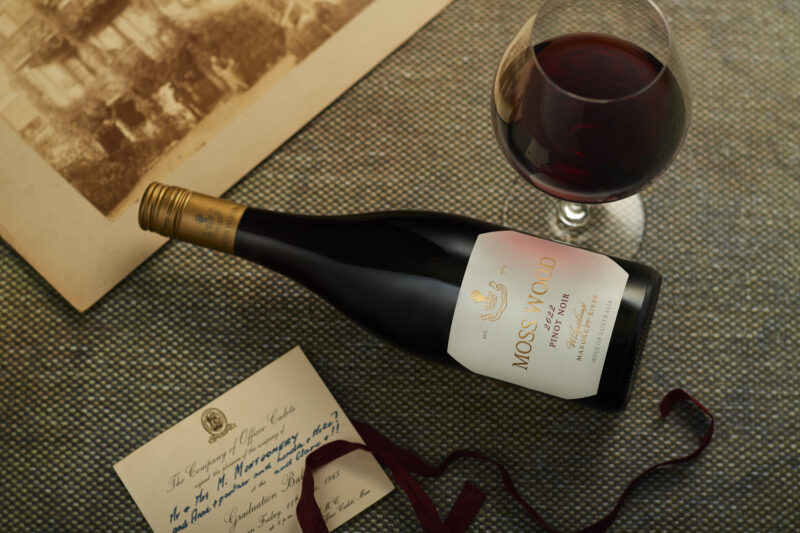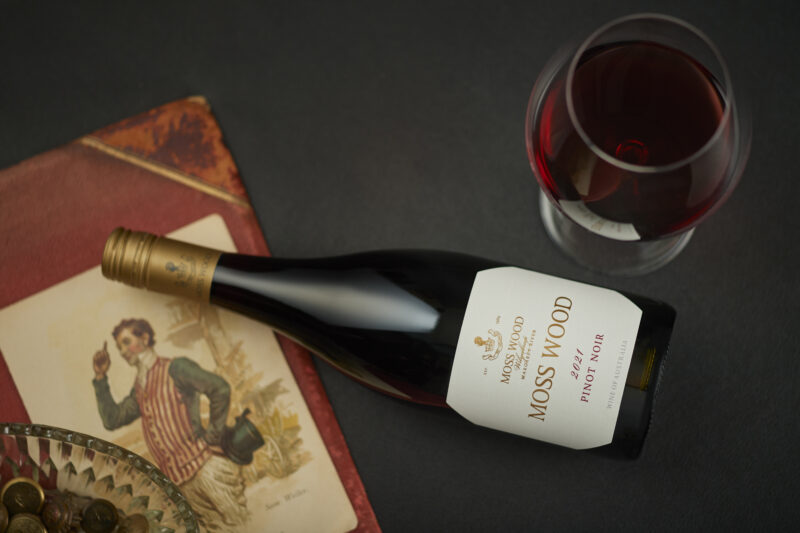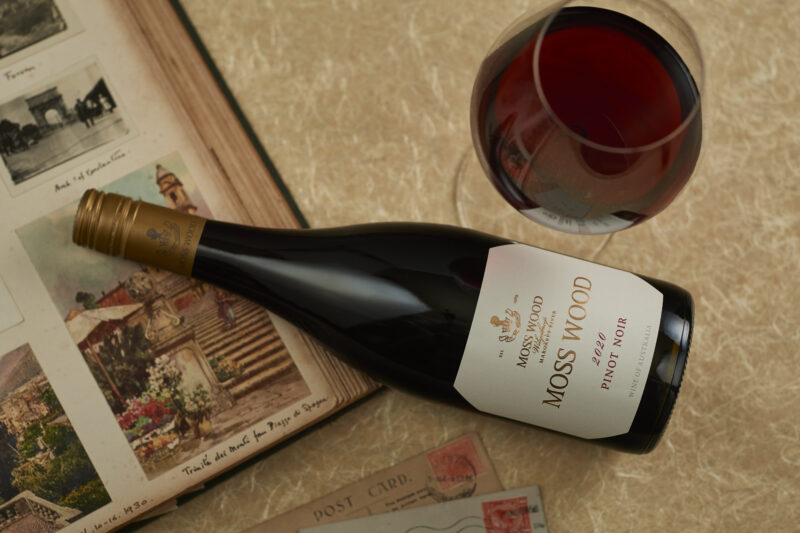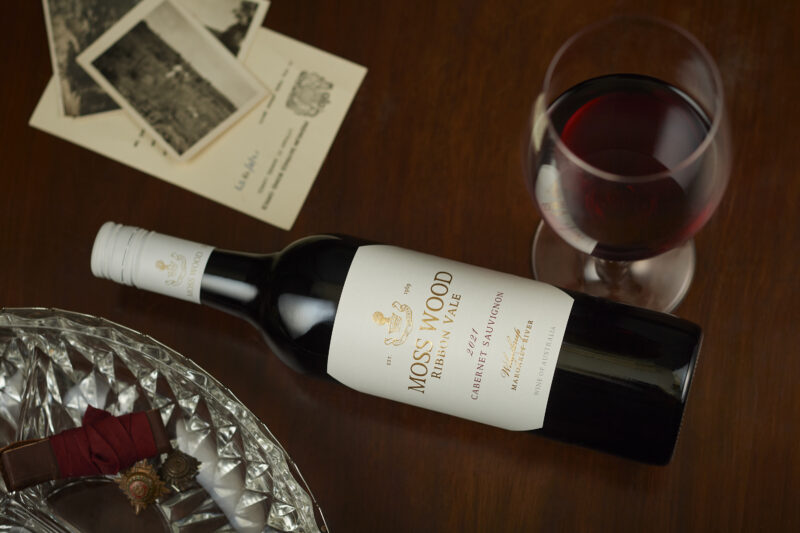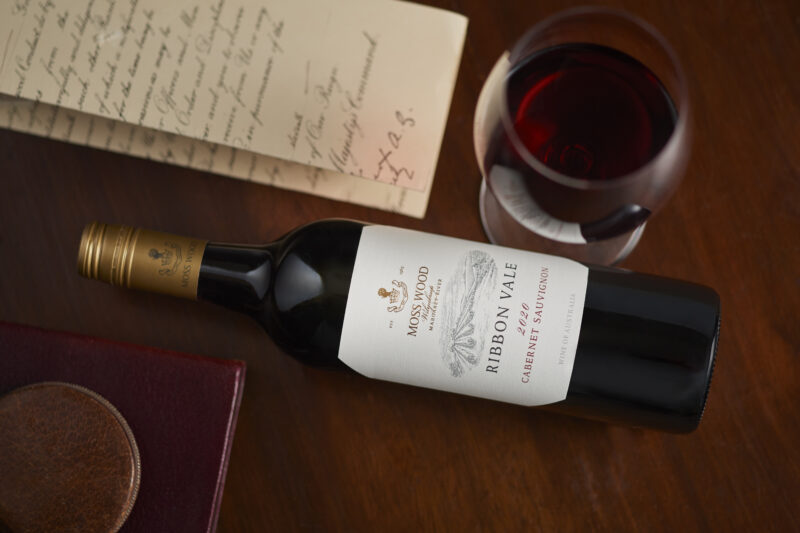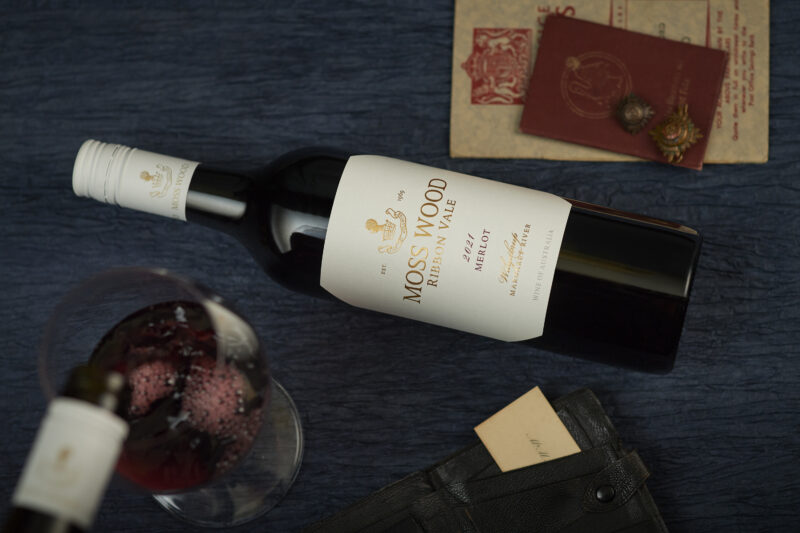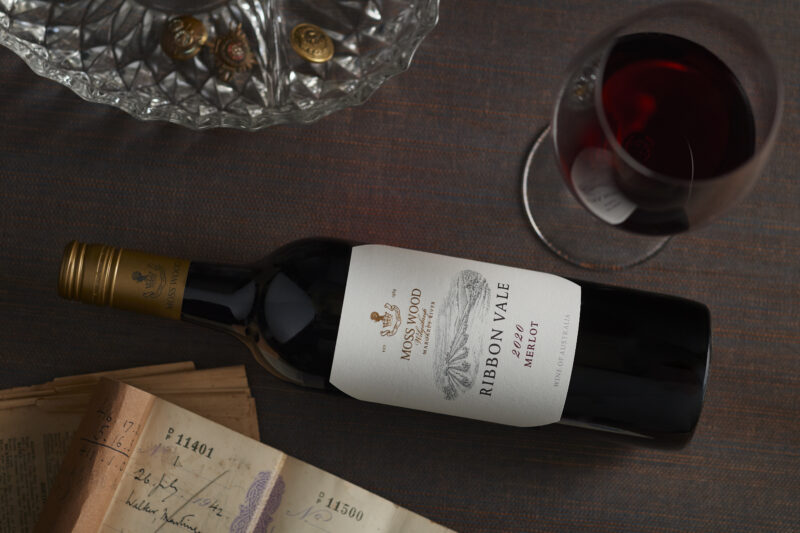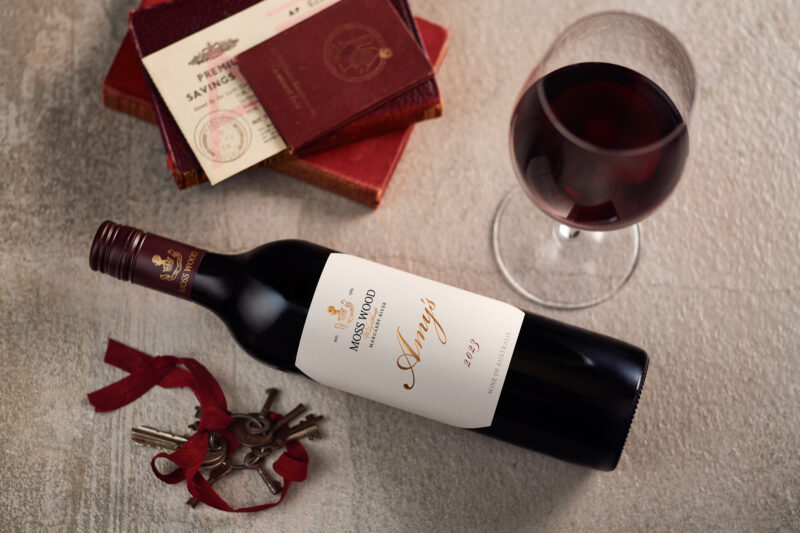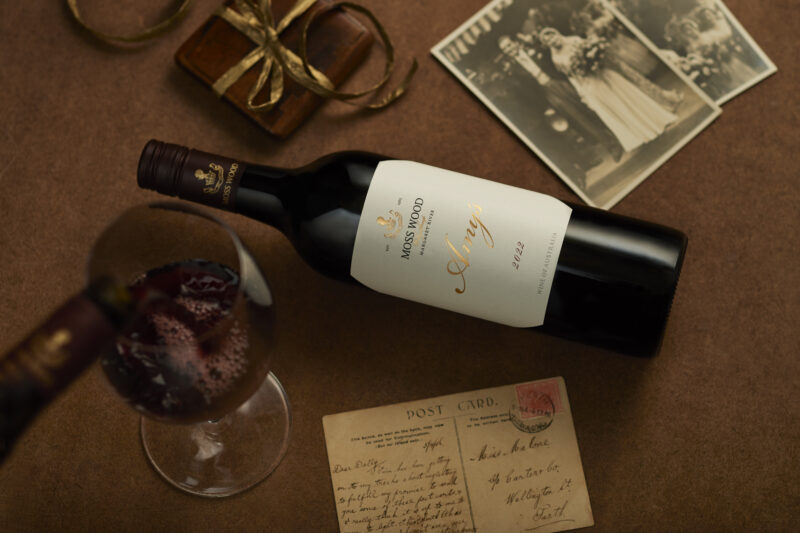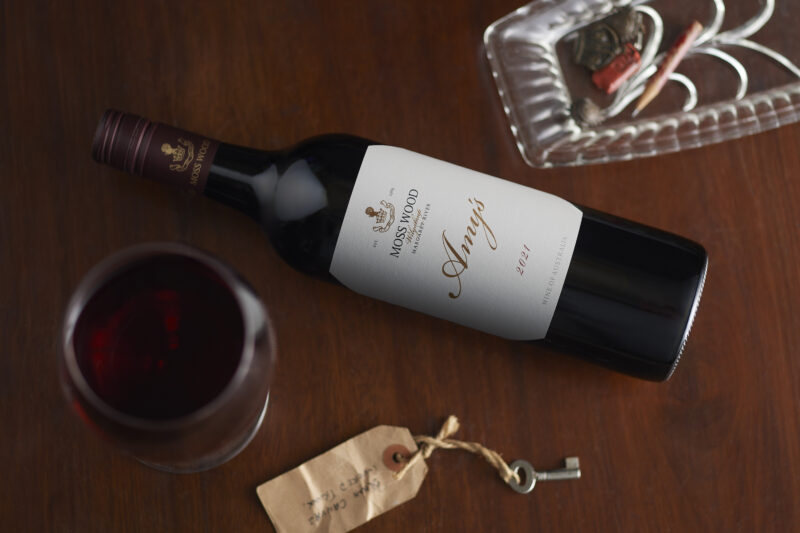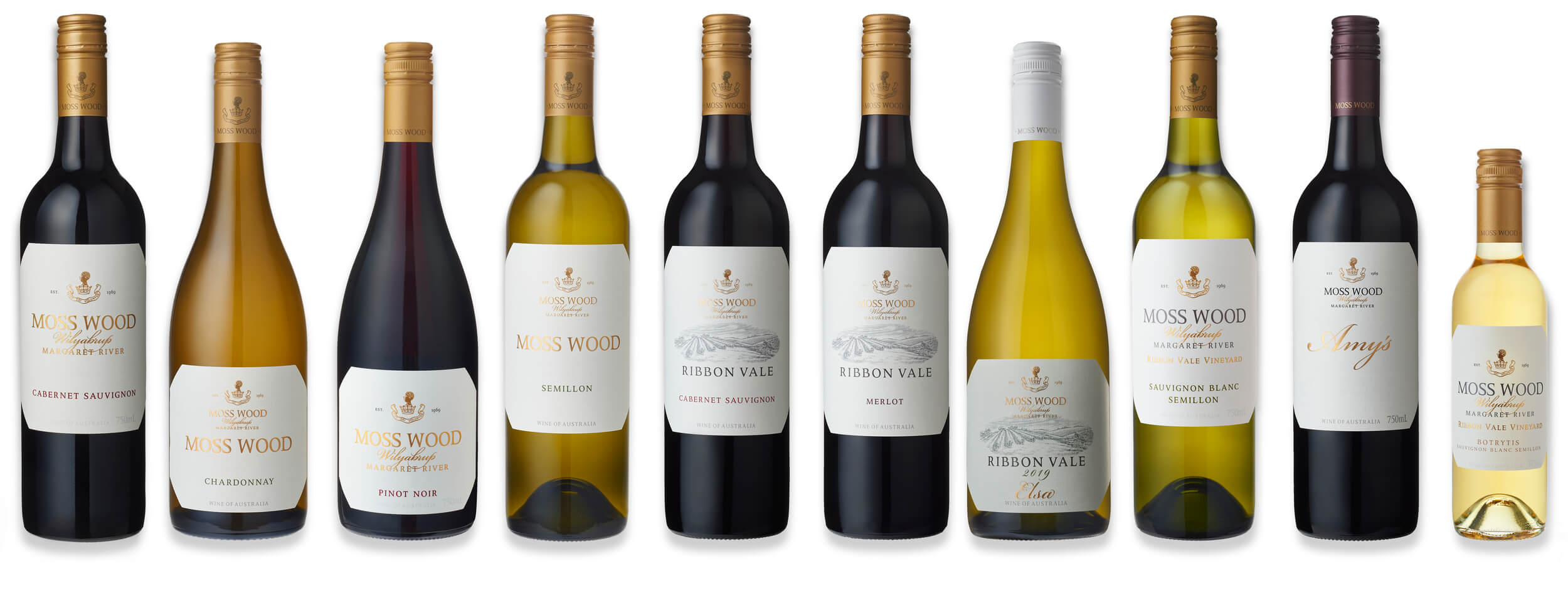DISCOVER MOSS WOOD
"The Latour of the Margaret River.”
Jancis Robinson
“Wines of this caliber are worth a special effort to find, purchase and consume.”
Lisa Perrotti Brown MW, ROBERT PARKER
Moss Wood is family owned and one of the most important producers within the Margaret River region.
-
Well-known as one of Australia's finest producing region
-
Pre-eminent Australian cabernet region
-
Maritime climate perfect for viticulture and provides consistency of vintage quality
-
Most remote wine region in the world – pristine environment of the area adding considerable cachet
Moss Wood is a pioneer producer of Margaret River.
-
Second commercial vineyard in the region
-
2019 celebrates 50 years since the planting of the first vines
-
Maintains a strong leadership position within the region
-
Put Margaret River on the map for its Cabernet Sauvignon
Moss Wood is dedicated to the making of distinguished wines of great character and longevity.
-
Each wine has a unique and consistent estate character – providing reliability for consumers
-
Moss Wood’s quality portfolio includes wines at different price points, giving consumers a broad range of choice
Discover The Margaret River Wine Region
Moss Wood is located in the Wilyabrup sub-region, the heart of the Margaret River wine region.
As a new wine producing area, Margaret River has a short viticultural history, therefore winemakers need to be continually reassessing their soil management practices and the performance of their vines if they are to understand the viticulture of the region and obtain the best results in the vineyard.
We put significant effort into developing an appropriate style for each of our varieties but the Cabernet Sauvignon, being the first wine, was our primary focus at the time. Naturally, we looked to the great wines of Bordeaux for inspiration and carefully examined the style of numerous of that region’s wines in the search for clues.
We were making wine in Margaret River and if we wanted to make wines like those of the Medoc, then that’s where we should go. Margaret River’s individual climate meant it would always be different.
Discover Our Story
Planted in 1969 Moss Wood is an important, founding estate of the Margaret River wine region, located in the northern sub–region of Wilyabrup, Western Australia.
Moss Wood was established as a specialist, high-quality winery. This was its raison d’être and still provides the motivation for its continued existence.
Clare & Keith Mugford, as viticulturalists, winemakers & proprietors, have been making wine & tending the vineyard at Moss Wood since 1984 & 1979, respectively.
Their exacting viticulture ensures the production of grapes of excellent quality & they have created a stable of fine wines distinguished by their consistency over each vintage & their ability to age superbly.
The Moss Wood & Mugford names are synonymous with uncompromising quality.
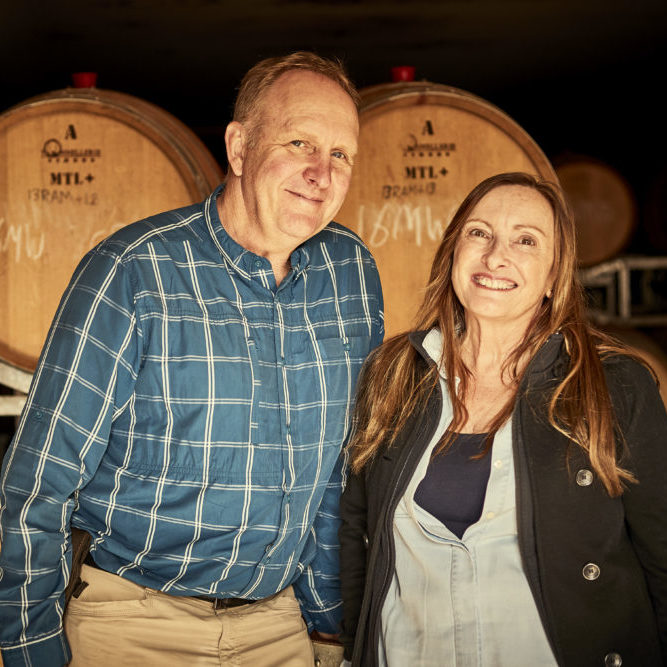
Viticulturalist, Winemaker and Proprietor
Vineyard
We believe wine quality is determined in the vineyard and viticultural techniques are constantly reassessed and informed by current research, both of others and our own. The emphasis at Moss Wood in the vineyard and winery is on the highest quality hand production and continuing reference to viticultural and winemaking technical advances.
Sustainability
Our commitment to farm sustainably means we don’t use tillage, ensuring soil health is not compromised and that we retain our abundance of earth worms. Instead, mulching techniques are used to preserve and maintain soil structure, micro flora and fauna.
MOSS WOOD
VINEYARD
First planted in 1969
14.8 hectares
- Gentle north and east facing slopes
- Unirrigated
- Scott Henry, Te Kauwhata and simple vertical shoot positioning trellising to reduce the density of the foliage and expose the grapes to more sunlight
- Soils ranging from sandy loam to a gravelly, red-brown loam, over clay subsoil
- Planting densities from 1500 to 2000 vines per hectare
Grape varieties grown at the Moss Wood vineyard are:
Cabernet Sauvignon,
Chardonnay, Semillon,
Pinot Noir, Petit Verdot and
Cabernet Franc.
RIBBON VALE
VINEYARD
First planted in 1977
8.2 hectares
- 8.2 hectares planted on south and west facing slopes
- Unirrigated
- Scott Henry trellising system
- Soils are classic gravelly loams over clay sub-soils
- Planting densities from 1500 to 2000 vines per hectare
Grape varieties grown at the
Ribbon Vale vineyard are:
Cabernet Sauvignon, Merlot,
Cabernet Franc, Sauvignon
Blanc and Semillon.
GLENMORE
VINEYARD
First planted in 1990
- Sourced from Glenmore Farm, Yallingup.
- Located 10kms north of Moss Wood
- Owned by Ian Bell who, worked at Moss Wood for 20 years
- North-facing vineyard, with gravelly, red-brown loam soil, over clay subsoil
- where the grapes for Amy’s
have been sourced since 1997.
Grape varieties grown at Glenmore vineyard are:
Cabernet Sauvignon, Petit
Verdot, Malbec, Merlot.
Discover Our Wines
At Moss Wood we believe wine quality is determined in the vineyard and viticultural techniques are constantly reassessed and informed by current research, both of others and our own. This has seen trials and improvements in trellising systems, soil conservation practices and pruning practices
the Samples

Wine Facts
| Wine Fact | Data |
|---|---|
| Wine Fact Median Harvest Date |
Data
Cabernet Sauvignon – 10th April, 2017 Cabernet Franc – 4th April, 2017 Petit Verdot – 15th April, 2017 |
| Wine Fact Harvest Ripeness |
Data
Cabernet Sauvignon – 13.0° Baume Cabernet Franc – 13.9° Baume Petit Verdot – 13.9° Baume |
| Wine Fact Yields |
Data
Cabernet Sauvignon – 7.37 tonnes/ha Cabernet Franc – 4.39 tonnes/ha Petit Verdot – 7.25 tonnes/ha |
| Wine Fact Weather Data |
Data
Growing Season Ave Temperature – 18.9⁰C Number of hours accrued between 18° and 28⁰C – 1120 Number of hours above 33⁰C – 33 |
| Wine Fact Days Elapsed Between Flowering and Harvest |
Data
Cabernet Sauvignon – 122 days Cabernet Franc – 123 days Petit Verdot – 130 days |
| Wine Fact Bottled | Data 04/11/2019 |
| Wine Fact Alcohol | Data 14.0% |
| Wine Fact Release Date | Data 4th May 2020 |
Moss Wood 2022 Cabernet Sauvignon – The Cellar Post
Beautiful definition and purity on the nose that shows fresh cassis, blackberries, and black plum, with cedar, pencil shavings, subtle vanilla and mocha nuances. Medium-full, superb freshness and concentration on the palate, dark fruit with a vibrant streak of purple, excellent oak spice, clove and tobacco, firm tannins and vibrant acidity. Structurally this is excellent.…
Moss Wood 2022 Cabernet Sauvignon – Gary Walsh, Wine Front
94% Cabernet Sauvignon, 4% Cabernet Franc, 2% Petit Verdot. Here we have a classic Moss Wood Cabernet, and maybe, though don’t mind me, it puts me in mind of the 2001 for richness and presence. It’s a powerhouse Cabernet and classic Moss Wood in terms of intensity and regal carriage. Black fruit, dried cranberry, cedar,…
Moss Wood 2021 Cabernet Sauvignon – Matthew Jukes
I love the 2021 vintage of this Margaret River standard bearer Cab. Made from 95% Cabernet Sauvignon (all Houghton Clone), 4% Cabernet Franc and 1% Petit Verdot from 52-year-old vines, this is as pure, deep and ripe-fruited as any Moss Wood in years gone by and with only 16% new oak involved, the fruit enjoys…
Vintage Notes
We knew from quite early on the 2016/17 growing season was going to be a mild one. The spring temperatures were below average delaying the flowering by a fortnight and this remained the theme all the way through to harvest.
We always get a bit edgy when contemplating cooler seasons because there’s a delicious irony (nice pun?) to confront. On the one hand, they have been responsible for some of Moss Wood’s greatest wines and 1975 and 1990 come quickly to mind. However, they can make ripening of Cabernet Sauvignon very marginal indeed and as Chrissie Amphlett used to sing, it’s a fine, fine line between pleasure and pain. As much as we love the subtlety and complexity of the above two wines, we could do without the anxiety associated with all the waiting during ripening.
For those not quite following the point, the lower the temperature the slower the ripening. Our most important but latest ripening variety is Cabernet Sauvignon, which typically ripens in the last week of March. However, if we have a cool season and ripening drags on into April, the quality is threatened by rain and bird attack. On the other hand, the lower temperatures are very beneficial for the fruit aromas and flavours. In these seasons Cabernet Sauvignon retains floral notes that give a rare glimpse of its full range.
As we said, it’s a fine line and we are entirely in the hands of Mother Nature. In 2020 she made plenty of idle threats but in the end took pity on the humble grapegrowers of Margaret River and delivered a classic, West Coast Indian Summer. We couldn’t have done any better if we’d written the script ourselves.
Aside from the generally low temperatures discussed above, we had drizzly weather during flowering and 16 days when minima were below the crucial 8°C. These cool nights were right at the beginning of the process, so appear to have done little harm, with yield for Cabernet Sauvignon being only very slightly below average. There was a 39mm dump of rain that came on 12th December which didn’t help matters but at least on that day the temperatures weren’t too low.
Through January we experienced delightful conditions, if somewhat mild. The mean temperature of 19.5°C was nearly 1° below average, so beach days were at a bit of a premium. February was similar and during the second week we also received 22mm of rain which freshened things up. It was during March when we started to have Chrissie Amphlett ringing our ears, when we racked up 81mm of rain. Yes, with the arrival of autumn we expect to see some showers but not necessarily quite that much.
At this stage, the late flowering and mild temperatures were beginning to loom large. Moss Wood Cabernet Sauvignon needs at least 1100 hours where the temperature is between 18 and 28°C to reach full ripeness but by the end of March, it had received 1046 and astute readers will note that to achieve the additional 50+ hours, we needed another 10 bright sunny days.
At this point Mother Nature had a complete change of heart. The sun shone and most importantly, the rain stopped and we started picking Cabernet Sauvignon in the second week of April, at 13.0° Baume and with full flavor ripeness after 1120 hours of ripening under its belt.
Meanwhile, the blending varieties were going about their business. Cabernet Franc came off on 4th April at a very creditable ripeness of 13.9° Baume, followed 11 days later by Petit Verdot at an even more impressive 13.9 Baume. Who would have known it had been so mild?
Yields across the 3 varieties were varied. At 4.39 tonnes per hectare, Cabernet Franc was down 26% but Cabernet Sauvignon was virtually spot on its average at 7.37 tonnes per hectare and Petit Verdot went ballistic. Its yield of 7.25 tonnes per hectare was an amusing 32% above average. We don’t often get the chance to write a statement like that.
As we said, it’s a fine line and we are entirely in the hands of Mother Nature. In 2017 she made plenty of idle threats but in the end took pity on the humble grapegrowers of Margaret River and delivered a classic, West Coast Indian Summer. We couldn’t have done any better if we’d written the script ourselves.
Aside from the generally low temperatures discussed above, we had drizzly weather during flowering and 16 days when minima were below the crucial 8°C. These cool nights were right at the beginning of the process, so appear to have done little harm, with yield for Cabernet Sauvignon being only very slightly below average. There was a 39mm dump of rain that came on 12th December which didn’t help matters but at least on that day the temperatures weren’t too low.
Through January we experienced delightful conditions, if somewhat mild. The mean temperature of 19.5°C was nearly 1° below average, so beach days were at a bit of a premium. February was similar and during the second week we also received 22mm of rain which freshened things up. It was during March when we started to have Chrissie Amphlett ringing in our ears, when we racked up 81mm of rain. Yes, with the arrival of autumn we expect to see some showers but not necessarily quite that much.
At this stage, the late flowering and mild temperatures were beginning to loom large. Moss Wood Cabernet Sauvignon needs at least 1100 hours where the temperature is between 18 and 28°C to reach full ripeness but by the end of March, it had received 1046 and astute readers will note that to achieve the additional 50+ hours, we needed another 10 bright sunny days.
At this point Mother Nature had a complete change of heart. The sun shone and most importantly, the rain stopped and we started picking Cabernet Sauvignon in the second week of April, at 13.0° Baume and with full flavour ripeness after 1120 hours of ripening under its belt.
Meanwhile, the blending varieties were going about their business. Cabernet Franc came off on 4th April at a very creditable ripeness of 13.9° Baume, followed 11 days later by Petit Verdot at an even more impressive 13.9 Baume. Who would have known it had been so mild?
Yields across the 3 varieties were varied. At 4.39 tonnes per hectare, Cabernet Franc was down 26% but Cabernet Sauvignon was virtually spot on its average at 7.37 tonnes per hectare and Petit Verdot went ballistic. Its yield of 7.25 tonnes per hectare was an amusing 32% above average. We don’t often get the chance to write a statement like that.
Production Notes
All the fruit was hand-picked and delivered to the winery where it was destemmed and placed in small, open fermenters. Each batch was seeded with multiple yeast strains and hand-plunged three times per day for extraction. Time on skins was typically 14 days, although one batch was pressed after a rare 22 days in the fermenter. As always, each one was tasted daily and pressed according to taste.
In May 2017, after malolactic fermentation in stainless steel tanks, each batch was racked to wood. All barrels were 228 litre French oak and 15% were new. In November 2018 all the individual batches were racked and blended for the first time. The final makeup of the assemblage was 88% Cabernet Sauvignon, 8% Petit Verdot and 4% Cabernet Franc.
People familiar with the traditional Moss Wood Cabernet Sauvignon blend will note the higher percentage of Petit Verdot than is usual. As we noted above, we had a surprisingly high yield. We had no hesitation including it in the blend because the mighty 2001 was 89%, 7% and 4%, respectively. We were more than happy with how that turned out.
In October 2019 the wine was racked from barrel for the final time and we conducted fining trials to see if we could improve the tannin balance but no fining was necessary. It was then sterile filtered and bottled on 1st Nov, 2019.
Tasting Notes
Colour and condition
Deep brick red, in bright condition.
Nose
A classic Cabernet combination of blueberries, violets, blackberries with tar and cedar notes. The musky, black fruit note also suggests the higher percentage of Petit Verdot this year. There’s also pencil shavings and pomegranate and a very light toasty oak.
Palate
In the traditional Moss Wood style, the first impression here is one of bright, generous blue and black fruit flavours, sitting over concentrated but balanced tannin. It’s the classic vineyard statement. However, there are also some pointers to the 2017 season, with crisp acidity, giving the palate a taut, almost zippy feel. The finish is firm, with a very light touch of toasty oak, mixing with cedar and tar.
Cellaring
Apparently, Mark Twain once said history never repeats itself but it often rhymes and we reckon grape growing seasons are a classic example. Moss Wood followers will know we’re fond of reminiscing about vintages past and how they compare with current releases and yes, it’s a useful way to give perspective on wine style and cellaring potential. With the 2017 we turn immediately to the 1990 because these two share some remarkable similarities. Both were mild growing seasons with plenty of rain and in March, not only were the dates similar but also the amounts. It resulted in similar ripeness, 13.0 Baume in 2017 compared with 12.8 in 1990, and harvest with the former picked on 10th April and the latter on the 12th. Most importantly, this means we have great expectations of the 2017 because its older sibling remains one of Moss Wood’s finest that continues to drink well 30 years later.
At present, the wine is showing vibrant fruit aromas so it’s an appealing youngster and can certainly be enjoyed now. However, the underlying structure is firm and will support long term aging, just as it did for the 1990. Over the next decade it should begin to soften but it will take until at least 20 years of age before it reaches full maturity.
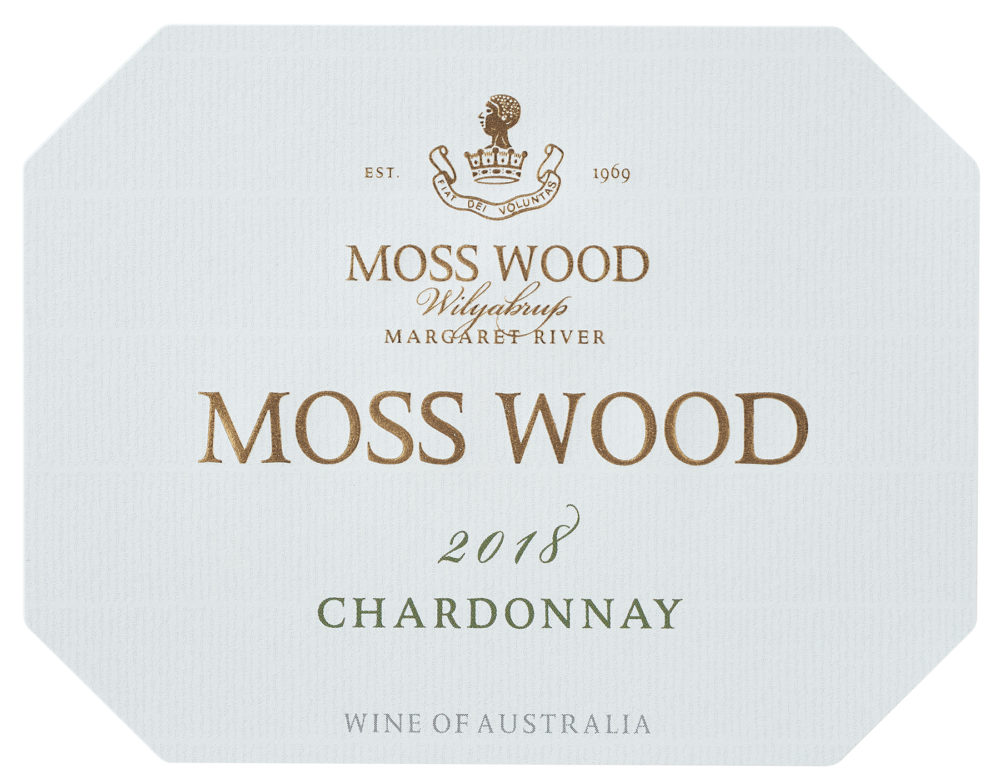
Wine Facts
Median Harvest Date - 9th March, 2018
Harvest Ripeness - 13.5°Be
Yields - 6.15 tonnes/ha
2018 Chardonnay Weather Data
Growing Season Ave Temperature – 19.44⁰C
Number of hours accrued between 18 and 28⁰C – 1195
Number of hours above 33⁰C – 13
Days Elapsed Between Flowering and Harvest - 122 days
Bottled 12/07/2019
Released 30/08/2019
Alcohol 14%
Moss Wood 2023 Chardonnay – Erin Larkin, The Wine Advocate
I often view this wine in the context of the season it was grown. The style of Moss Wood Chardonnay is more consistent than the vintages that birth it, and so it becomes a fascinating lens through which to view the wine each year. The 2023 growing season (which, as a reminder, contains the spring…
Moss Wood 2023 Chardonnay – Ken Gargett, Wine Pilot
Amazing to think that Moss Wood’s oldest Chardonnay vines are now 48 years of age. Fermentation for this cracking Chardonnay was finished in 228-litre French oak barriques. The wine was then blended in tank and returned to barrel, with 49% new, for the next year and a half. The colour here is a deep but…
Moss Wood 2023 Chardonnay – Angus Hughson, Wine Pilot
A more refined edition of Moss Wood Chardonnay bursting with sherbet, melon, and citrus tones that are powerful, taut and well integrated with toasty French oak. Bone dry and embryonic, it is highly reserved with a chalky texture while just starting to build nutty, peanut brittle tones. Super young and tightly wound, this is a…
Vintage Notes
Often our wine stories are a narrative of how we struggled against the many challenges Mother Nature threw at us before we finally triumphed, against near impossible odds, to produce a high-quality wine. Well, with the Moss Wood 2018 Chardonnay, there will be none of that. Quite the contrary in fact.
In reviewing the 2017/18 growing season, we were reminded of how good it was - one of those rare years when just about everything worked in our favour. We enjoy them when they come around but often take them for granted. For example, 1991 was very much a vintage that went by without incident. This may sound odd but we often get a pleasant surprise when the young wines start to reveal their quality when really, there should be no surprise at all. We hope you don’t find this boring!
Our Spring weather was near perfect. The calendar year 2017 produced just over 10% above average rainfall, with a total of 1117mm, so the soil was nicely topped up with moisture. However, very conveniently, the flowering period wasn’t too wet and we had regular showers but no downpours, so they did little harm to the process. These were accompanied by temperatures that rarely dropped below 8°C, so the vines loved that as well.
Through Summer, temperatures remained moderate, so while the vines didn’t rush through their ripening, the season was roughly a week longer than average, they made steady progress and reached full maturity of both sugar and flavour with ease. Furthermore, they experienced only 13 hours above 33°C, so there was absolutely no heat stress. In fact, for a while we were concerned temperatures may have been a little too mild but in the end these fears were unfounded. The vines had flowered right on their average date of 5th November and had plenty of time to get the job done.
To note how mild our Summer was, the hottest day was 14th January, when the mercury topped out at 39.1°C but apart from that, the temperature rarely went over 33°C.
We had no issues with disease or damage from pests like the birds and we cruised into the Chardonnay harvest on 7th March. The yield of 6.15 tonnes/ha was down by roughly 10% and the ripeness was 13.5° Baume, very slightly above our average of 13.1.
Production Notes
All the fruit was hand-picked and delivered to the winery where it was whole-bunch pressed. The must was cold settled for 48 hours then the clear juice was racked and seeded with multiple yeast strains for primary fermentation. At approximately halfway through ferment, on 18th March, the juice was racked to wood. All the barrels were 228 litre French oak and 56% were new. The wine also underwent a full malolactic fermentation and once completed, all the barrels were racked, blended and adjusted in stainless steel. The finished wine was then returned to barrel.
On 25th June 2019 all barrels were racked and blended in stainless steel and fining trials were carried out. None of the agents offered any improvement so the wine remained unfined, apart from a bentonite addition for protein stability. To complete the process, the wine was sterile filtered and bottled on 12th July 2019.
Tasting Notes
Colour and condition:
The hue is medium to deep straw with a green tint; condition is bright.
Nose:
All the features that give Moss Wood Chardonnay its distinctiveness are on display. The fruit aromas are of peach, orange marmalade, honeysuckle and quince, plus, of course, the usual roast nuts and oat biscuits. There is a light toasty background from the barrels and a touch of caramel and crème brulee from the malolactic fermentation.
Palate:
The palate is full bodied with good acidity and tannin but this firm structure is well and truly complemented by the fruit flavours. There is an array of peach, lime, quince and caramel that provide length and breadth and the finish shows some soft, toasty oak and just enough tannin for good cellaring.
Cellaring:
As with all Moss Wood Chardonnays it is very attractive now and can certainly be enjoyed as a youngster. However, it will repay patience and we recommend it be cellared for at least 10 years to allow it to show some bottle age. Full maturity will be reached at 20 years of age.
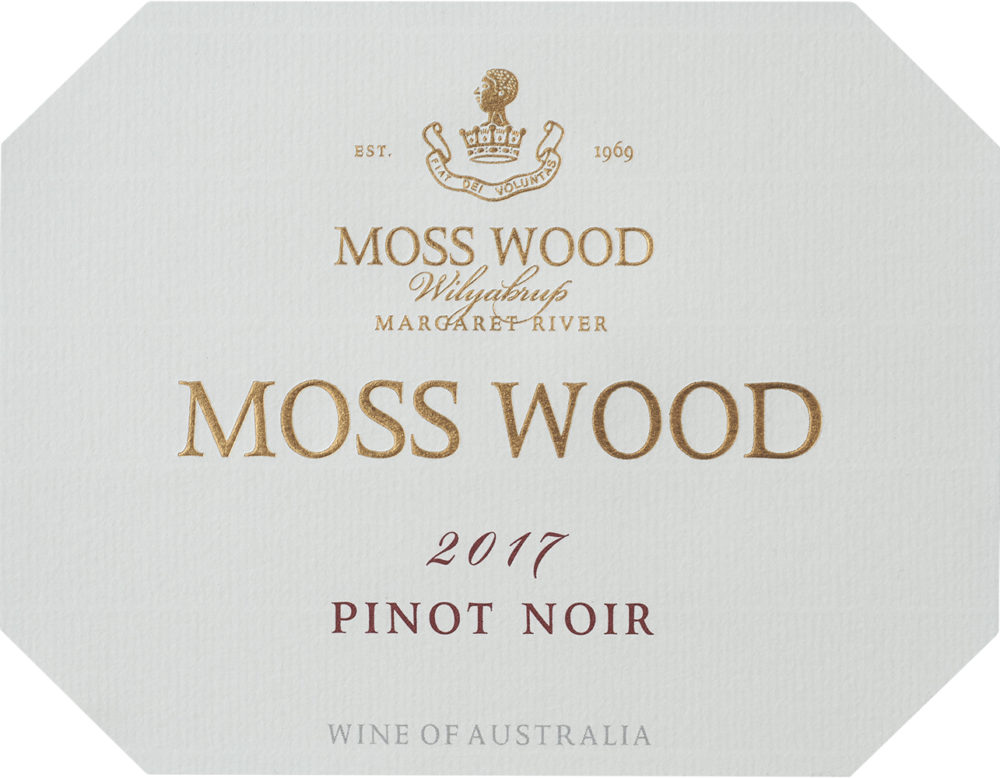
Wine Facts
Median Harvest Date - 9th March, 2017
Harvest Ripeness - 13.6°Be
Yields - 6.95 tonnes/ha
Weather Data
Growing Season Ave Temperature – 19.34⁰C
Number of hours accrued between 18 and 28⁰C – 993
Number of hours above 33⁰C – 34
Days Elapsed Between Flowering and Harvest - 104 days
Bottled 08/11/2018
Released 01/09/2019
Alcohol 14%
Moss Wood 2022 Pinot Noir – Huon Hooke, The Real Review
Margaret River isn’t one of the great pinot noir regions, consequently there are very few made there. This is the best Moss Wood pinot noir I’ve tasted for many years. Youthful red-purple colour, bright and deep. There are cherry, ginger and iodine/peat aromas which are bright and fresh and fruit driven, while the palate is…
Moss Wood 2022 Pinot Noir – Erin Larkin, The Wine Advocate
The 2022 Pinot Noir leads with cherry and wild strawberry, garden mint (or is it a faint waft of eucalypt, instead?) and caper brine. In the mouth, the wine is silky and almost oily/velvety in its texture, with sweet blood orange, pink peppercorn and raspberry in the mix. This is a plush-feeling wine, one that…
Moss Wood 2022 Pinot Noir – Ken Gargett, Wine Pilot
20% of the fruit went into fermentation as whole bunches, adding in the search for texture and complexity. Maturation was for a year and a half in French oak barrels, 18% new. A pale crimson hue, the nose exhibits a slightly savoury/near rustic style with red fruits, warm earth, aniseed, undergrowth, mushrooms, raspberries and cherries.…
When Dr John Gladstones first published his climate research in 1965, he proposed the as yet unplanted Margaret River area as being suitable for the production of high quality table wine. The consistency of its maritime climate suggested it would be especially good for the Bordeaux varieties, in particular, Cabernet Sauvignon and this made up the vast majority of the early plantings.
However, the pioneers of the region, like Moss Wood founders Bill and Sandra Pannell, approached the new venture with open minds, without the blinkers of existing traditions. Margaret River was a blank canvas and they were determined to try other noble varieties and took two important decisions.
Firstly, going against the trend of the time, they chose not to plant Riesling, believing, quite correctly as it turned out, it needed a more continental climate to make the best wine. Places like the Clare and Eden Valleys in South Australia or the Great Southern region of Western Australia have proven themselves far more suitable.
Secondly, they were very interested in white and red Burgundy, so planted Chardonnay and Pinot Noir. It’s now a matter of history the former has made itself very much at home in our area but until recently, the latter has been something of an enigma.
Since they grow side by side in Burgundy, it makes perfect sense that Pinot Noir should do well, yet Chardonnay has been the show pony. Is there a simple explanation? Although Chardonnay has a tendency to suffer low yields as a result of our mild, damp Spring, it really loves the Summer and Autumn and has consistently made wines of international style and quality. Pinot Noir, on the other hand, hasn’t quite had the same success.
We believe there are several threads to the answer to both production and marketing.
Quite simply, Pinot Noir is not as easy and forgiving to make. It is far more sensitive to vineyard techniques, requiring good fruit exposure and lower yields to achieve quality results. In the winery it is also fussy and needs to be fermented and aged in the correct way. This applies wherever the variety is grown and even in its ancestral home of Burgundy it can be notoriously inconsistent.
Such quirky behavior means consumers have been cautious about purchasing Pinot Noir and it has tended to be sought out by wine nerds prepared to accept its recalcitrance in return for the occasional outstanding bottle. Over the last decade, things have begun to change. The variety is now quite widely planted around the world, with many more winemakers chasing the Holy Grail and the general quality of wine has improved. With this has come much stronger consumer acceptance and Pinot Noir is now a mainstream variety.
In Margaret River, it is not and never has been widely planted. The initial success of Cabernet Sauvignon, meant Pinot Noir was not an attractive choice for many growers, especially given the specialised inputs required in vineyard and winery. Consequently, the wine never achieved the same market penetration or critical acclaim, despite the early success of wines like the Moss Wood 1981 Pinot Noir, thought by many to have been the best Australian Pinot Noir produced up to that point.
Nevertheless, at Moss Wood we have always believed in the quality of our wine and have been very happy to keep producing it, even when the idea of a Margaret River Pinot Noir was anathema to some. We can now point to vintages that have aged beautifully for more than 35 years. Importantly, in the modern wine market, it’s not just nerds who drink it and, in this era, consumers are very happy to consume good Pinot Noir from anywhere, with no preconceived bias.
What remains an important part of the Pinot Noir world is the amount of debate the variety creates. Yes, it’s fussy but this is its great attraction because it produces such a broad range of styles which can polarise opinion. The variations that occur between producers and regions are enormous and lead many critics to opine as to which is best. The answer, of course, is there are numerous opinions and all are correct because beauty is in the eye of the beholder. These debates are at their most intense late in evening after the participants have enjoyed several good bottles with dinner.
Vintage Notes
Turning our attention to the Moss Wood 2017 Pinot Noir, how does it compare with the 39 vintages that have preceded it? The answer is, among the very best and almost a twin for the great 1990. It’s pure coincidence, of course, but the similarities are remarkable. This also means it was a near-copybook season. Flowering was a little over 1 week behind average on 22ndNovember and during this period we had rain on several occasions but none of it heavy and minimum temperatures were mild, rarely dropping below 8°C. Through the rest of the season we had further rains but once again the timing was good, most of it coming before the grapes began to soften.
Temperatures were generally mild and the vineyard received only 34 hours above 33°C. The hottest day of the Summer was a very comfortable 36.9°C on 4th January. These conditions were near perfect for ripening, albeit somewhat slowly and the Pinot Noir casually strolled into its median harvest date of 9th March, 14 days later than average, with a ripeness of 13.6° Baume, very slightly above its average of 13.4. The yield was 6.95 tonnes/hectare, very slightly above the average of 6.40.
Production Notes
The fruit was handpicked and delivered to the winery where it was destemmed into small, open fermenters. The must was chilled and allowed to soak for 48 hours and was then inoculated with multiple yeast strains for primary fermentation. Fermentation temperatures were kept to a maximum of 30°C and each batch was hand plunged 3 times per day. After 18 days on skins the must was pressed to stainless steel tank and underwent malolactic fermentation and once completed, the finished batches were racked to wood. All barrels were 228 litre French oak and 10% were new.
After 19 months in wood, all barrels were racked and blended in stainless steel and fining trials were carried out. None were found to improve the wine so it remained unfined. It was then sterile filtered and bottled on 5th November, 2018.
Tasting Notes
Colour and condition:
Medium to deep ruby hue; bright condition.
Nose:
Lifted aromatics of strawberry, quince jelly, roses and cherries. In the background there is an array of Pinot’s complex notes – earth, cumin and mushroom. There are also light, toasty oak notes.
Palate:
The palate has medium to full body with bright fruit flavours. Strawberries, cherries and dark jubes sit over a firm tannin, so the wine has excellent balance; it is lively and intense without being heavy. The performance is completed with some toasty oak on the finish.
Cellaring:
We mentioned above that this wine has many similarities to its 1990 sibling and having tasted that very recently we confidently predict the 2017 will develop beautifully in the cellar for at least 30 years. The only problem for customers may be keeping their hands off it for that long. The bright and generous fruit notes make it a very enjoyable youngster and it should retain those for a least the next 10 years.
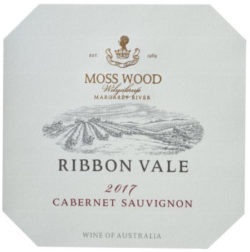
Wine Facts
Median Harvest Date
Cabernet Sauvignon – 20th April, 2017
Cabernet Franc – 5th April, 2017
Merlot – 5th April, 2017
Mean Harvest Ripeness
Cabernet Sauvignon – 13.0⁰ Be
Cabernet Franc – 12.7⁰ Be
Merlot – 13.8⁰ Be
Yields
Cabernet Sauvignon – 8.08 t/ha
Merlot – 6.27 t/ha
Cabernet Franc – 7.19 t/ha
Ripening Time from Flowering to Harvest
Cabernet Sauvignon – 131 days
Cabernet Franc – 124 days
Merlot – 125 days
Bottled 12th August, 2019.
Released 1st October, 2019.
Alcohol 13.5%
Moss Wood Ribbon Vale 2022 Cabernet Sauvignon – Erin Larkin, The Wine Advocate
The 2022 Ribbon Vale Cabernet Sauvignon is chalky and chewy, with raspberry pip, nori, iodine, bramble and fresh leather. This is elegant and attractively “not” fruit driven; instead, it’s propelled by exotic spice and tannins that feel silken. It’s a magnificent wine, a postcard from Margaret River in a bottle. 14% alcohol, sealed under screw…
Moss Wood Ribbon Vale 2022 Cabernet Sauvignon – Ken Gargett, Wine Pilot
A wine which is near completely Cabernet Sauvignon here, with 90% of the blend that variety, the remaining 10% is split evenly between Merlot, Cabernet Franc, Petit Verdot and Malbec. A wine which provides more compelling evidence as to how good the 2022 vintage was. Maturation was in 228-litre French barrels, 19% new, for 26…
Moss Wood Ribbon Vale 2022 Cabernet Sauvignon – Angus Hughson, Wine Pilot
This compact 2022 Cabernet Sauvignon delivers a youthful, measured expression of cassis, bay leaf and cedar with a fine French oak accompaniment. Stil quit tight in a young claret style, yet holding its line very well for an extended, structural finish thanks to mouthcoating tannins. Shy right now and needs time to build.
The Ribbon Vale Project – How Far Have We Come?
It’s almost 20 years to the day that we began negotiations with our neighbour, John James, for the purchase of Ribbon Vale. There was a serendipitous meeting of needs. John, having established the vineyard in 1977, was looking for an exit strategy and we were looking to expand their wine production, through the purchase of a mature, high-quality vineyard.
Ribbon Vale suited the bill perfectly, sharing many key attributes with Moss Wood – similar Wilyabrup soils, cane pruning and of course, it was and remains unirrigated. The purchase was settled on 1st March, 2000 and we set about putting our own stamp on the property. What followed has been a fascinating adventure in grapegrowing and winemaking. We had to update the trellising to the new (at the time) Henry system. More challengingly, we had to learn how to make wine styles we hadn’t attempted before – Sauvignon Blanc and Merlot. The latter has required us to play the long game.
Merlot has been a challenge but one we have enjoyed far more than initially expected. This variety is the most widely planted in Bordeaux and very highly regarded there. Anyone lucky enough to taste Chateau Petrus or Chateau Cheval Blanc would surely understand why. Australian Merlot, with very few exceptions, is typically of only moderate quality and usually dismissed as soft, generic dry red. We admit to making that very criticism ourselves but once we were exposed to high-quality Merlot and how it is made, a whole new world has opened up. We have had to focus on the wines of Pomerol and St Emilion, looking in depth at their production techniques as well as the demanding task of tasting as many as we can. Very demanding indeed!
Another twist in the tale is, for Moss Wood we felt and still feel, the Cabernet Sauvignon style from that vineyard isn’t enhanced by the characteristics which Merlot would bring to the blend. So, with little or no experience we embarked on a very steep learning curve.
Amusingly, once we got to know Merlot, we discovered it shared several traits with Pinot Noir. Just like its Burgundian cousin, Merlot demands special attention in the vineyard and will only ripen well if the shoots are properly positioned, the canopy is allowing good sunlight penetration and the yield is moderate. This last point is crucial because Merlot will grow a monumental crop if allowed. The record under our ownership is 14.6 tonnes/hectare for the 2000 vintage – not bad for an unirrigated vineyard! Conditions in that year were exceptional and all varieties blitzed their average but we have trimmed it back since. The long-term yield stands at a still very respectable 7.87 t/ha. The quality risk is evident when we note that in the relatively warm year of 2000, the vines needed an extra 2 weeks to get all that fruit ripe and even then, sugar levels were only just where we wanted them and likewise colour depth. Many bad things can happen in 2 weeks, like rain damage and bird attack to name just two and hence the need for careful management.
By the year 2000 we had a long track record of making Cabernet Sauvignon at Moss Wood and this gave us some useful insights into how we might manage this variety at Ribbon Vale. However, every vineyard is different and we had to come to terms with what the new location required. For example, the clone planted at Ribbon Vale is SA126, which performs differently to the Houghton selection at Moss Wood. Even with improved trellising, we still spent several seasons understanding the flavour profile in the grapes and working out what levels of ripeness we should aim for. Exactly the same is true for Cabernet Franc.
Looking back over this period then, it could be summarised in the following way. We spent the first decade improving and analysing how the vineyard performed. As a result, we have spent the second decade seeing a gradual improvement in the quality of the wine style but the job is not yet finished. We have recently added Petit Verdot and Malbec to the Ribbon Vale vineyard and over the next few years we’ll be able to assess what role they may play in enhancing the Cabernet Sauvignon, in particular.
No doubt customers will have their own views on how the project has gone so far. For us, we are most proud of the quality of the Merlot. It’s not so much that we think it’s a better wine than the Cabernet Sauvignon but we are delighted with the overall improvement and are comfortable it is a serious wine, capable of bearing comparison with wines of this style from anywhere in the world.
The Ribbon Vale Cabernet Sauvignon has always been at a higher quality level but we are keen to see it recognised as one of the finest wines in this style from Margaret River. We have evolved it to the point where its primary fruit characters make it almost the complete wine. It has gone from requiring a significant blending component of Merlot, typically at least 20%, plus, of course, around 5-10% Cabernet Franc, to now just 1-2% each of these. If it’s OK with everyone else, we’ll give ourselves a pass mark so far.
2017 Growing Season
We have certainly mentioned this before but we’ll happily say again, 2017 is one of the very best seasons we’ve had. The similarities with 1990 are uncanny and Keith gets a distant look in his eye as he waxes lyrically about what a sensational year that was. For those with an interest in these things, 1990 remains one of the very few vintages which was good for every Australian wine region.
It’s worth noting 2017 was at the cooler end of our spectrum and as the season progressed, we were watching the weather with a degree of concern. Merlot and Cabernet Franc have few problems in a mild season but here in Margaret River, Cabernet Sauvignon can be brought undone by our autumnal rain. Luckily for us, April gave us a classic west coast Indian Summer and the vines were able to ripen the crop without a problem.
The numbers speak for themselves. The cooler season is highlighted by the fact all 3 varieties took longer to ripen than normal. For Cabernet Sauvignon, the flowering to harvest interval was 131 days, 4 days longer than average, while Merlot took 125 days and Cabernet Franc 124 days, 6 and 4 days longer, respectively. The slower rate of ripening for Cabernet Sauvignon can also be partly attributed to its yield of 8.08 tonnes per hectare, a very solid 15% above average. For Merlot and Cabernet Franc, things went the other way. The former produced 6.27 tonnes per hectare, down by 20% and the latter yielded 7.19 tonnes per hectare, down 11%. It was wetter and colder when they went through flowering, with 8 days when the temperature dropped below 8°C.
The sugar levels for all varieties were excellent, with Cabernet Sauvignon reaching 13.0 Baume and Merlot and Cabernet Franc 13.8 and 12.7, respectively. Just as importantly, the tannin and flavour ripeness were excellent across all three. The mild conditions have allowed them to express many of the pretty scented notes lost in warmer years.
We experienced no complications with disease or bird damage and so after being as patient as we have ever been, we got started with Merlot and Cabernet Franc on 5th April, 2017. Cabernet Sauvignon followed on just over two weeks later on 20th April.
Ribbon Vale 2017 Red Wine Production Techniques
All the fruit is hand-picked then delivered to the winery where it is sorted, destemmed and put into fermenters. Cabernet Franc and Cabernet Sauvignon are fermented in open, stainless steel tanks, where they are hand-plunged 3 times per day. Merlot, however, is placed in small, closed fermenters, where extraction is by pumpover, 3 times per day.
The reason for the different treatment is we improve both colour and flavour by cold-soaking the Merlot before fermentation and for reasons we don’t fully understand, the pumping over during ferment gives better extraction than hand plunging. Merlot has a mind of its own.
Fermentation temperatures were maintained at a maximum of 30°C and time on skins was slightly longer than usual. Cabernet Sauvignon was 17 days, Merlot 20 days and Cabernet Franc a more typical 12 days.
After pressing, each wine underwent malolactic fermentation in stainless steel and once completed each batch was adjusted and racked to barrel. All were French oak and all were 228 litre volume. The Cabernet Sauvignon had 13% new barrels and the Merlot 10%.
In November 2018 the final blends were made up. The 2017 Ribbon Vale Cabernet Sauvignon comprising 94% Cabernet Sauvignon, 3% Merlot and 3% Cabernet Franc. The 2017 Ribbon Vale Merlot is 93% Merlot and 7% Cabernet Franc. The blended wines were returned to barrel where they stayed until July 2019, when they were racked and blended in stainless steel in preparation for bottling.
Fining trials were carried out on both wines to see if tannin balance could be improved. In the end, no fining was required for either wine. They were then sterile filtered and bottled on 12th August, 2019.
Tasting Notes
Colour and condition:
A typically dark Cabernet Sauvignon brick red hue; bright condition.
Nose:
The impact of the long, mild season is evident on the nose. The classic Ribbon Vale Cabernet Sauvignon notes of red currant and tar are brightened by scented mulberry and violet notes. That said, this wine also displays the complex earth and leather notes we see in the cooler years. There is also just a light touch of spicy oak to round things out.
Palate:
It is here, in particular, where we see the progress we have been making with this vineyard although we can’t claim it all. The high-quality vintage must take at least some of the credit. The classic Ribbon Vale structure is still evident and it has a solid tannin structure. However, the blue and red fruits give a generous mouthfeel, dare we say even an almost Moss Wood-like balance and smoothness. There is good length and the flavours run all the way to the end where the oak rounds things out nicely.
Cellaring:
As with all of our Cabernet Sauvignon wines, when we have a good year, we now confidently predict very long term aging and this wine is no exception. It will take between 5 and 10 years to see the first impact of the aged characters but for those who prefer their wines fully mature, we recommend it be cellared for at least 25 years.
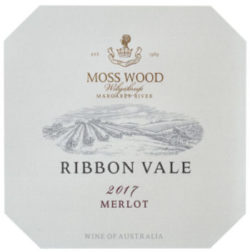
Wine Facts
Median Harvest Date
Merlot – 5th April, 2017
Cabernet Franc – 5th April, 2017
Mean Harvest Ripeness
Merlot – 13.8⁰ Be
Cabernet Franc – 12.7⁰ Be
Yields
Merlot – 6.27 t/ha
Cabernet Franc – 7.19 t/ha
Ripening Time from Flowering to Harvest
Merlot – 125 days
Cabernet Franc – 124 days
Bottled 12th August, 2019.
Released 1st October, 2019.
Alcohol 14%
Moss Wood Ribbon Vale 2022 Merlot – Erin Larkin, The Wine Advocate
The 2022 Ribbon Vale Merlot is from a warm, dry and early vintage; the confluence of these climatic conditions has come together as a superb red wine vintage in the region. Aromatically, the wine leads with redcurrant and pomegranate molasses, raw cocoa and tapenade. On the spice register, we see nutmeg, clove, anise and cinnamon.…
Moss Wood Ribbon Vale 2022 Merlot – Ken Gargett, Wine Pilot
I suspect this wine holds a Moss Wood record for the shortest vintage weather report they have ever issued – “Mother Nature was in a very benign frame of mind”. Of course, they didn’t leave it at that, but it is a great start. In addition to the Merlot, 7% of Cabernet Sauvignon and 7%…
Moss Wood Ribbon Vale 2022 Merlot – Angus Hughson, Wine Pilot
This serious Merlot from 2022 is again putting Moss Wood forward as one of the country’s top performers with this variety. It opens with a powerful and tightly focussed core of blackberry and cedar with touches of crushed leaves, and a strong savoury feel. Impressive intensity and fruit drive takes it up a notch, with…
The Ribbon Vale Project – How Far Have We Come?
It’s almost 20 years to the day that we began negotiations with our neighbour, John James, for the purchase of Ribbon Vale. There was a serendipitous meeting of needs. John, having established the vineyard in 1977, was looking for an exit strategy and we were looking to expand their wine production, through the purchase of a mature, high-quality vineyard.
Ribbon Vale suited the bill perfectly, sharing many key attributes with Moss Wood – similar Wilyabrup soils, cane pruning and of course, it was and remains unirrigated. The purchase was settled on 1st March, 2000 and we set about putting our own stamp on the property. What followed has been a fascinating adventure in grapegrowing and winemaking. We had to update the trellising to the new (at the time) Henry system. More challengingly, we had to learn how to make wine styles we hadn’t attempted before – Sauvignon Blanc and Merlot. The latter has required us to play the long game.
Merlot has been a challenge but one we have enjoyed far more than initially expected. This variety is the most widely planted in Bordeaux and very highly regarded there. Anyone lucky enough to taste Chateau Petrus or Chateau Cheval Blanc would surely understand why. Australian Merlot, with very few exceptions, is typically of only moderate quality and usually dismissed as soft, generic dry red. We admit to making that very criticism ourselves but once we were exposed to high-quality Merlot and how it is made, a whole new world has opened up. We have had to focus on the wines of Pomerol and St Emilion, looking in depth at their production techniques as well as the demanding task of tasting as many as we can. Very demanding indeed!
Another twist in the tale is, for Moss Wood we felt and still feel, the Cabernet Sauvignon style from that vineyard isn’t enhanced by the characteristics which Merlot would bring to the blend. So, with little or no experience we embarked on a very steep learning curve.
Amusingly, once we got to know Merlot, we discovered it shared several traits with Pinot Noir. Just like its Burgundian cousin, Merlot demands special attention in the vineyard and will only ripen well if the shoots are properly positioned, the canopy is allowing good sunlight penetration and the yield is moderate. This last point is crucial because Merlot will grow a monumental crop if allowed. The record under our ownership is 14.6 tonnes/hectare for the 2000 vintage – not bad for an unirrigated vineyard! Conditions in that year were exceptional and all varieties blitzed their average but we have trimmed it back since. The long-term yield stands at a still very respectable 7.87 t/ha. The quality risk is evident when we note that in the relatively warm year of 2000, the vines needed an extra 2 weeks to get all that fruit ripe and even then, sugar levels were only just where we wanted them and likewise colour depth. Many bad things can happen in 2 weeks, like rain damage and bird attack to name just two and hence the need for careful management.
By the year 2000 we had a long track record of making Cabernet Sauvignon at Moss Wood and this gave us some useful insights into how we might manage this variety at Ribbon Vale. However, every vineyard is different and we had to come to terms with what the new location required. For example, the clone planted at Ribbon Vale is SA126, which performs differently to the Houghton selection at Moss Wood. Even with improved trellising, we still spent several seasons understanding the flavour profile in the grapes and working out what levels of ripeness we should aim for. Exactly the same is true for Cabernet Franc.
Looking back over this period then, it could be summarised in the following way. We spent the first decade improving and analysing how the vineyard performed. As a result, we have spent the second decade seeing a gradual improvement in the quality of the wine style but the job is not yet finished. We have recently added Petit Verdot and Malbec to the Ribbon Vale vineyard and over the next few years we’ll be able to assess what role they may play in enhancing the Cabernet Sauvignon, in particular.
No doubt customers will have their own views on how the project has gone so far. For us, we are most proud of the quality of the Merlot. It’s not so much that we think it’s a better wine than the Cabernet Sauvignon but we are delighted with the overall improvement and are comfortable it is a serious wine, capable of bearing comparison with wines of this style from anywhere in the world.
The Ribbon Vale Cabernet Sauvignon has always been at a higher quality level but we are keen to see it recognised as one of the finest wines in this style from Margaret River. We have evolved it to the point where its primary fruit characters make it almost the complete wine. It has gone from requiring a significant blending component of Merlot, typically at least 20%, plus, of course, around 5-10% Cabernet Franc, to now just 1-2% each of these. If it’s OK with everyone else, we’ll give ourselves a pass mark so far.
2017 Growing Season
We have certainly mentioned this before but we’ll happily say again, 2017 is one of the very best seasons we’ve had. The similarities with 1990 are uncanny and Keith gets a distant look in his eye as he waxes lyrically about what a sensational year that was. For those with an interest in these things, 1990 remains one of the very few vintages which was good for every Australian wine region.
It’s worth noting 2017 was at the cooler end of our spectrum and as the season progressed, we were watching the weather with a degree of concern. Merlot and Cabernet Franc have few problems in a mild season but here in Margaret River, Cabernet Sauvignon can be brought undone by our autumnal rain. Luckily for us, April gave us a classic west coast Indian Summer and the vines were able to ripen the crop without a problem.
The numbers speak for themselves. The cooler season is highlighted by the fact all 3 varieties took longer to ripen than normal. For Cabernet Sauvignon, the flowering to harvest interval was 131 days, 4 days longer than average, while Merlot took 125 days and Cabernet Franc 124 days, 6 and 4 days longer, respectively. The slower rate of ripening for Cabernet Sauvignon can also be partly attributed to its yield of 8.08 tonnes per hectare, a very solid 15% above average. For Merlot and Cabernet Franc, things went the other way. The former produced 6.27 tonnes per hectare, down by 20% and the latter yielded 7.19 tonnes per hectare, down 11%. It was wetter and colder when they went through flowering, with 8 days when the temperature dropped below 8°C.
The sugar levels for all varieties were excellent, with Cabernet Sauvignon reaching 13.0 Baume and Merlot and Cabernet Franc 13.8 and 12.7, respectively. Just as importantly, the tannin and flavour ripeness were excellent across all three. The mild conditions have allowed them to express many of the pretty scented notes lost in warmer years.
We experienced no complications with disease or bird damage and so after being as patient as we have ever been, we got started with Merlot and Cabernet Franc on 5th April, 2017. Cabernet Sauvignon followed on just over two weeks later on 20th April.
Ribbon Vale 2017 Red Wine Production Techniques
All the fruit is hand-picked then delivered to the winery where it is sorted, destemmed and put into fermenters. Cabernet Franc and Cabernet Sauvignon are fermented in open, stainless steel tanks, where they are hand-plunged 3 times per day. Merlot, however, is placed in small, closed fermenters, where extraction is by pumpover, 3 times per day.
The reason for the different treatment is we improve both colour and flavour by cold-soaking the Merlot before fermentation and for reasons we don’t fully understand, the pumping over during ferment gives better extraction than hand plunging. Merlot has a mind of its own.
Fermentation temperatures were maintained at a maximum of 30°C and time on skins was slightly longer than usual. Cabernet Sauvignon was 17 days, Merlot 20 days and Cabernet Franc a more typical 12 days.
After pressing, each wine underwent malolactic fermentation in stainless steel and once completed each batch was adjusted and racked to barrel. All were French oak and all were 228 litre volume. The Cabernet Sauvignon had 13% new barrels and the Merlot 10%.
In November 2018 the final blends were made up. The 2017 Ribbon Vale Cabernet Sauvignon comprising 94% Cabernet Sauvignon, 3% Merlot and 3% Cabernet Franc. The 2017 Ribbon Vale Merlot is 93% Merlot and 7% Cabernet Franc. The blended wines were returned to barrel where they stayed until July 2019, when they were racked and blended in stainless steel in preparation for bottling.
Fining trials were carried out on both wines to see if tannin balance could be improved. In the end, no fining was required for either wine. They were then sterile filtered and bottled on 12th August, 2019.
Tasting Notes
Colour and condition:
Deep brick red hue; in bright condition.
Nose:
The nose opens with a lifted display of the dark fruits, especially blackberries and blueberries. There is also a floral note, reminiscent of roses. Behind this lies Merlot’s complex notes, typically found in all its best wines - tar, leather, pencil shavings, combined with some light charry oak and earthy notes.
Palate:
This follows a similar thread to the nose, where the initial impact is generous blue and back fruits, filling the front and mid-palate. It is full bodied and it has a supple feel, with the tannins in good balance. The finish is a classic combination of Merlot’s firm, drying tannin, sitting beautifully with the tarry and earthy notes and the background of soft oak.
Cellaring:
We definitely recommend medium to long term cellaring for this wine. Yes, it’s from a very good vintage, with the fruit depth and balance of a classic year, supple and very easy to drink. Don’t be deceived. This has the structure to last for decades and those who prefer some age on their wines won’t be disappointed. We recommend a minimum cellaring time of 5 to 10 years, by which time the wine will have begun to soften just a little. Full maturity will be reached after 20 years of age.
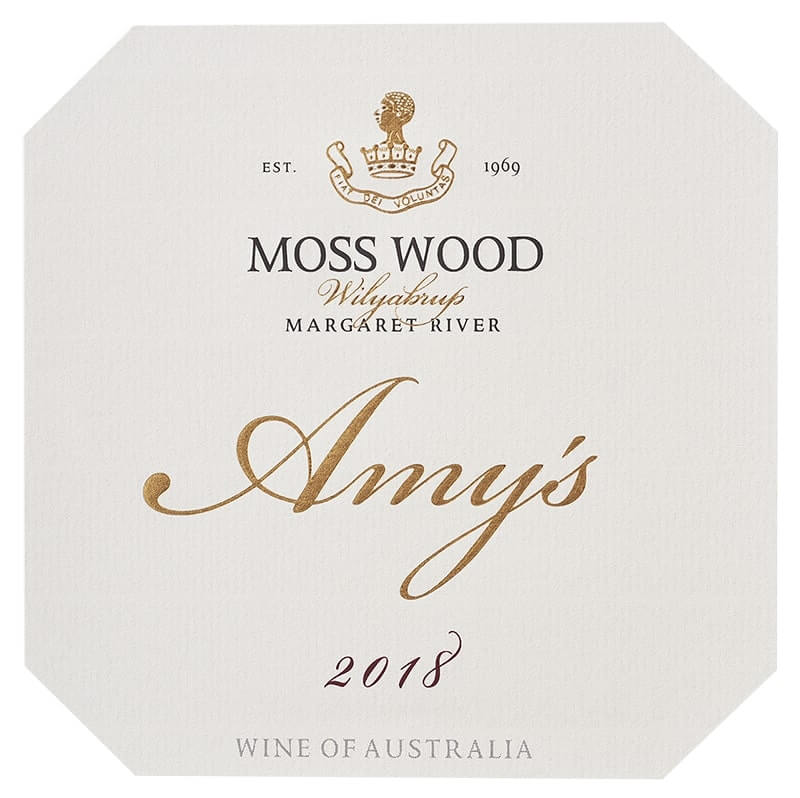
Wine Facts
Harvested
Glenmore Cabernet Sauvignon – 28th March, 2018
Glenmore Merlot – 13th March, 2018
Glenmore Malbec – 13th April, 2018
Glenmore Petit Verdot – 28th March, 2018
Bottled - 06/11/2019
Released - 01/03/2020
Beaume
Glenmore Cabernet Sauvignon – 14.5° Baume
Glenmore Merlot – 14.6° Baume
Glenmore Malbec – 14.5° Baume
Glenmore Petit Verdot – 13.8° Baume
Alcohol - 14.0%
Moss Wood 2023 Amy’s – Erin Larkin, The Wine Advocate
The 2023 Amy’s hails from a superb vintage in Margaret River. Mild, dry conditions set the tone for the season, and while many of the wines are yet to be released, the early indications are that this could be one of the most astounding vintages of Margaret River’s modern era history. We shall see. You…
Moss Wood 2023 Amy’s – Ken Gargett, Wine Pilot
Very much Cabernet Sauvignon dominant (83%), the wine also enjoys contributions from Merlot (5%), Malbec (6%) and Petit Verdot (6%). After fermentation and blending, the wine was returned to the 228-litre French oak barrels, none of them new, for maturation for a year and a half. A purple/maroon colour here, we have a nose exhibiting…
Moss Wood 2023 Amy’s – Angus Hughson, Wine Pilot
The 2023 Amy’s blend of Cabernet Sauvignon with Petit Verdot, Malbec and Merlot is highly approachable at this young age with enveloping aromas of blackcurrant and gravel with a strong dark earth component. Excellent upfront impact with a seamless core of dark berry fruits, primed with acidity and underpinned by fine, pliable tannins. A firm…
Tasting Notes
Colour and condition: Deep, brick red hue, almost blue notes; bright condition.
Nose: There is good volume and lift, with an array of aromas expected from this blend, with all varieties making their presence felt. Cabernet Sauvignon dominates, so its blueberries and violets are clear, while Petit Verdot brings its dark berry and jubes, Merlot supporting with black currant and Malbec providing red fruit, almost watermelon-like and some white pepper spice. The complex notes typical of a Cabernet blend fill out the background with cedar and tobacco and despite being aged in exclusively old barrels some soft oak as well.
Palate: As expected from the nose, the red and dark fruits dominate and fill the mouth, giving the wine tremendous length. They sit over a firm but balanced structure, with acidity that is lifted, ensuring the fruit flavours are lively, full body gives good density and mouthfeel and on the finish, the tannins provide an astringency that doesn’t disrupt, being smooth with no furry or bitter edges.
Cellaring: The Moss Wood Amy’s is produced in a style specifically intended to have early appeal. The generous fruit characters and well-balanced tannin structure ensure it can be enjoyed as a youngster. Of course, Margaret River Cabernet Sauvignon has a tremendous reputation for cellaring and the 2018 Amy’s will certainly short term cellaring of say 5 years but we encourage customers to appreciate and enjoy its attractive fruit flavours now and save space in their cellar for our Ribbon Vale or Moss Wood Cabernet Sauvignons.
Vintage Notes
The 2017 calendar year delivered a very healthy rainfall of 1117mm, 10% above average. This, combined with the pristine spring weather, meant that the vines were primed for an almost perfect growing season. We were fortunate to avoid any significant inclement weather during flowering and rarely experienced temperatures below 8C. All of the above factors meant that we were confident heading into the Summer ripening period.
The Summer of 2018 was characterised by moderate temperatures which were conducive to slow, even ripening. Full sugar and flavour ripeness was achieved in all varieties, and this occurred about one week later than average.
The Merlot was the first fruit to come off the Glenmore Vineyard in mid-March, closely followed by the Cabernet Sauvignon and Malbec in late- March. The Petit Verdot was the last fruit picked in mid-April. All fruit was received in the winery in excellent condition, free from disease and bird damage.
PRODUCTION NOTES
Once delivered to the winery, the fruit was hand-sorted to remove any matter other than grape (i.e. leaves, stick, etc) that may have been brought in from the vineyard, and must pumped into closed fermenters. In tank, the must was inoculated for primary fermentation and pumpovers were conducted 3 times daily to enhance flavour and colour extraction. Once each fermentation had gone past 0° Baume, daily tastings were conducted to determine whether tannin balance had been achieved. When we were comfortable that the wine was not benefiting from further time on skins we pressed. In 2018 the time on skins varied, with the Cabernet Sauvignon having 13 days, the Merlot 10 days, the Malbec 10 days and the Petit Verdot 11 days.
After pressing, Malolactic Fermentation was completed in tank and all batches were racked to 228 litre French oak barrels, with no new oak used. The wine remained in barrel for 18 months – long enough to gather sufficient oak complexity whilst still retaining the vibrant fruit aromas and flavours we desire in this blend. Each batch was then racked out of barrel and blended in stainless steel tank. We then conducted fining trials and determined that the wine had excellent balance and didn’t benefit from any of the fining agents, so the wine remained untreated. It was then sterile filtered and bottled on 6th November, 2019.
The final blend is Cabernet Sauvignon 76%, Merlot 8%, Malbec 8%, Petit Verdot 8%.
the Moss Wood Wine Stable
Wines made from the MOSS WOOD VINEYARD
Moss Wood Cabernet Sauvignon
Moss Wood Chardonnay
Moss Wood Pinot Noir
Moss Wood Semillon
Wines made from the RIBBON VALE VINEYARD
Moss Wood Ribbon Vale Cabernet Sauvignon
Moss Wood Ribbon Vale Merlot
Moss Wood Ribbon Vale Sauvignon Blanc Semillon
Moss Wood Ribbon Vale Botrytis Sauvignon Blanc Semillon
Wines made from the GLENMORE VINEYARD
Moss Wood Amy’s
A blend of Cabernet Sauvignon, Petit Verdot, Malbec & Merlot
ADDITIONAL INFORMATION & MARKETING MATERIAL
CLARE MUGFORD
Viticulturist, Winemaker &
Proprietor
clare@mosswood.com.au
Mobile: +61 427 170 729
KEITH MUGFORD
Viticulturist, Winemaker &
Proprietor
keith@mosswood.com.au
Mobile: +61 427 556 266
Postal address:
PO Box 225, Cowaramup,
Western Australia 6284
AUSTRALIA
Tel: +61 8 9755 6266
mosswood@mosswood.com.au
